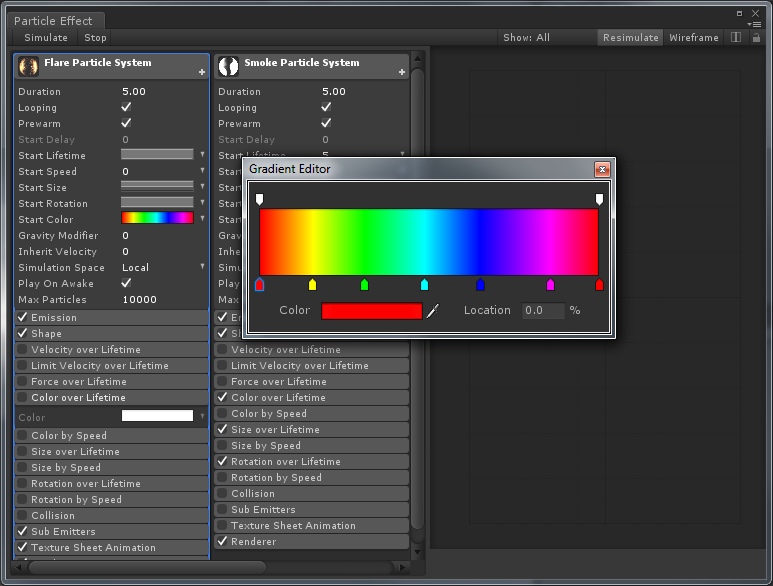Unity Snow Particle System Download
Particles / Instancing • • • • • • • • • • • • • • • Particles are very similar to 3D billboards. There are two major differences, though: • there is usually a LOT of them • they move • the appear and die. Nba 2k13 Crack Fix more. • they are semi-transparent Both of these difference come with problems.
Game engine, tools and multiplatform. You can create any 2. D game with Unity. You can make it with ease, you can make it highly- optimized and beautiful, and.

This tutorial will present ONE way to solve them; there are many other possibilities. Particles, lots of them! The first idea to draw many particles would be to use the previous tutorial’s code, and call glDrawArrays once for each particle. This is a very bad idea, because this means that all your shiny GTX’ 512+ multiprocessors will all be dedicated to draw ONE quad (obviously, only one will be used, so that’s 99% efficiency loss). Then you will draw the second billboard, and it will be the same. Clearly, we need a way to draw all particles at the same time.
There are many ways to do this; here are three of them: • Generate a single VBO with all the particles in them. Easy, effective, works on all platforms.

• Use geometry shaders. Not in the scope of this tutorial, mostly because 50% of the computers don’t support this. • Use instancing. Not available on ALL computers, but a vast majority of them. In this tutorial, we’ll use the 3rd option, because it is a nice balance between performance and availability, and on top of that, it’s easy to add support for the first method once this one works. Instancing “Instancing” means that we have a base mesh (in our case, a simple quad of 2 triangles), but many instances of this quad.
Technically, it’s done via several buffers: • Some of them describe the base mesh • Some of them describe the particularities of each instance of the base mesh. You have many, many options on what to put in each buffer. In our simple case, we have: • One buffer for the vertices of the mesh. No index buffer, so it’s 6 vec3, which make 2 triangles, which make 1 quad. • One buffer for the particles’ centers. • One buffer for the particles’ colors.
These are very standard buffers. They are created this way.
// Update the buffers that OpenGL uses for rendering. // There are much more sophisticated means to stream data from the CPU to the GPU, // but this is outside the scope of this tutorial. // glBindBuffer ( GL_ARRAY_BUFFER, particles_position_buffer ); glBufferData ( GL_ARRAY_BUFFER, MaxParticles * 4 * sizeof ( GLfloat ), NULL, GL_STREAM_DRAW ); // Buffer orphaning, a common way to improve streaming perf. See above link for details. GlBufferSubData ( GL_ARRAY_BUFFER, 0, ParticlesCount * sizeof ( GLfloat ) * 4, g_particule_position_size_data ); glBindBuffer ( GL_ARRAY_BUFFER, particles_color_buffer ); glBufferData ( GL_ARRAY_BUFFER, MaxParticles * 4 * sizeof ( GLubyte ), NULL, GL_STREAM_DRAW ); // Buffer orphaning, a common way to improve streaming perf. See above link for details.
Download Free Competing Advantage 2Nd Edition Ebook Software here. GlBufferSubData ( GL_ARRAY_BUFFER, 0, ParticlesCount * sizeof ( GLubyte ) * 4, g_particule_color_data );, which is as usual. Before render, they are bound this way. // 1rst attribute buffer: vertices glEnableVertexAttribArray ( 0 ); glBindBuffer ( GL_ARRAY_BUFFER, billboard_vertex_buffer ); glVertexAttribPointer ( 0, // attribute.
No particular reason for 0, but must match the layout in the shader. 3, // size GL_FLOAT, // type GL_FALSE, // normalized? 0, // stride ( void * ) 0 // array buffer offset ); // 2nd attribute buffer: positions of particles' centers glEnableVertexAttribArray ( 1 ); glBindBuffer ( GL_ARRAY_BUFFER, particles_position_buffer ); glVertexAttribPointer ( 1, // attribute. No particular reason for 1, but must match the layout in the shader. 4, // size: x + y + z + size =>4 GL_FLOAT, // type GL_FALSE, // normalized?
0, // stride ( void * ) 0 // array buffer offset ); // 3rd attribute buffer: particles' colors glEnableVertexAttribArray ( 2 ); glBindBuffer ( GL_ARRAY_BUFFER, particles_color_buffer ); glVertexAttribPointer ( 2, // attribute. No particular reason for 1, but must match the layout in the shader.